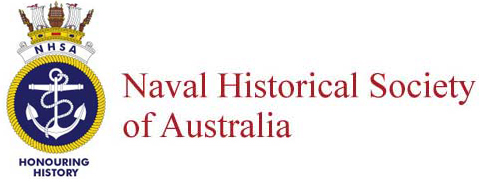- Author
- Royle, Guy, Admiral
- Subjects
- WWII operations
- Tags
-
- RAN Ships
- HMAS Australia II, HMAS Paluma II, HMAS Polaris, HMAS Poyang, HMAS Stella, HMAS Yunnan, HMAS Benalla I, ML310, RFA Bishopdale, HMAS Warrego II, HMAS Colac, HMAS Broome, HMAS Arunta I, HMAS Katoomba, HMAS Lithgow, HMAS Ballarat I, HMAS Barcoo, HMAS Warrnambool I, HMAS Bendigo I, HMAS Hobart I, HMAS Canberra I, HMAS Manoora I, HMAS Kanimbla I, HMAS Westralia I, HMAS Warramunga I, HMAS Vendetta I, HMAS Shropshire, HMAS Stuart I, HMAS Gascoyne I
- Publication
- March 2001 edition of the Naval Historical Review (all rights reserved)
During 1944 Vendetta, Gascoyne, Barcoo and 27 corvettes were employed escorting, patrolling and in support of various army operations along the New Guinea coast.
In July 1944 the US command reviewed their Pacific strategy. Admiral Nimitz favoured a Central Pacific thrust to the Japanese mainland. Gen Macarthur was adamant that the US was under a moral obligation to liberate 17 million Filipinos before assaulting Japan. Macarthur’s view prevailed, coupled with the strategic advantage of cutting Jap supply lines from Dutch East Indies, Thailand, French Indo China, and the Malay States.
In September TF74 covered landings at Morotai and Halmahera which provided key airstrips for the long range bombing of the Philippines. At the same time preparations were being made for a major landing at Leyte Gulf.
Leyte Gulf
For the Leyte operation a huge force of some 550 ships assembled consisting of:
Battleships, cruisers, escort carriers, destroyers, destroyer escorts, attack transports, cargo ships, landing craft, survey vessels, minecraft and supply ships.
13 RAN ships were part of this force and consisted of:
- TF74 Australia, Shropshire, Arunta, Warramunga
- Supply ships Bishopdale, Poyang, Yunnan and Merkur
- Landing Ships Manoora, Westralia, Kanimbla
- Gascoyne and HDML 1074 were part of the minesweeping and hydrographic group.
The vast convoy set sail from Hollandia on 13 Oct and as one observer said:
“No one could see this great panorama of ships without realising the impotence of any great army engaged in oceanic warface without control of the sea and air. “
The minesweepers and survey groups were scheduled to arrive 3 days before the main force in order to provide clear waters and surveyed channels. The smallest of the group, HDML 1074 had some problems. On 16th when the group ran into typhoon weather and she dropped 26′ astern – at 0400 she was challenged by a friendly ship who could not decipher the reply from the storm-tossed HDML – the challenger attempted to ram and severely damaged the bow – a ship was sent to assist and 1074 proudly continued to Leyte. This is a great story of courage, determination and good seamanship. At noon on the 17th the survey group arrived and under air attack carried out their tasks before the main group arrived.
Nearing Leyte Gulf in the early hours of 20 October Shropshire snared a mine on the port paravane which later cleared itself and was sunk by small arms fire. TF74 began fire support for the landing at 0900 and in the afternoon General Macarthur waded ashore at Tacloban to declare that he had returned.
The whole operation over a number of days was subject to heavy air attack, with Australia hit by the first Kamikaze at 0605 on the 21st. The strike on the bridge area killed Captain Dechaineux and Cmdr Rayment; Cdre Collins was wounded. In all 30 were killed or died of wounds and 654 were wounded. Australia sailed for Manus at 1100 escorted by Warramunga. Captain Nichols in Shropshire became CTF74.
Landings and support operations continued and so did the air attacks, resulting in a number of ships damaged and sunk with significant casualties.
From a report on 24 October of a Japanese force likely to approach through Surigao Strait, the whole support group assembled in the southern part of Leyte Gulf in a formation to cross the `T’ of an enemy force entering through the Strait.
Shropshire and Arunta were part of the force which consisted of 6 battleships, 8 cruisers, 20 destroyers and squadrons of PT boats. At 0323 Arunta and her squadron carried out a bold torpedo attack on the Jap battleship Yamashiro and was told to move away quickly before the main force opened fire at 0350. Shropshire opened fire at 0356 for about 12 minutes, despatching 214 – 8″ shells at the Yamashiro. We were confident we contributed to the enemy’s destruction.
The full story of the Battle for Leyte Gulf does not end in that last great surface battle, nor is there time to give you detail of the other phases. Sufficient to say the whole event was a decisive victory for the allies.
Our ships received complimentary signals from General Macarthur and Admirals Kinkaid, Oldendorf, Berkey and Weyler for their work in the Leyte Campaign with particular reference to Shropshire’s efficiency in radar reporting – which we did with our callsign “Porthole” which was well known.
